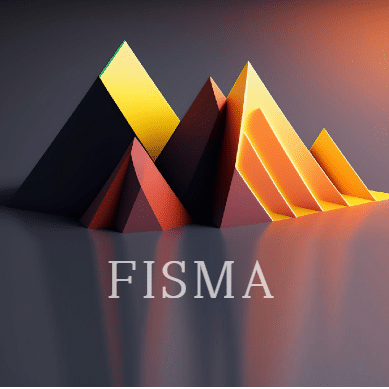The way that your company conducts itself has never been more critical. Approximately 76% of consumers say they will stop buying from companies that do not respect the environment, their employees, or local communities. The same study found that 86% of employees prefer to work for companies that care about the same issues they do.
Both statistics indicate that companies need to start prioritizing their ESG score. An ESG score reflects different elements of your environmental consciousness, social awareness, and transparent governance.
The term ‘ESG’ encompasses environmental, social, and governance. An ESG score attempts to describe the combination of these elements in a quantifiable way. As a result, many industries are beginning to emphasize the importance of achieving and maintaining a quality ESG score.
Additionally, understanding and managing your ESG score is now considered an element of overall risk assessment. A poor ESG score indicates that your company may have non-technical risks (NTR) that may allow a variety of scenarios that have direct financial consequences, such as lawsuits, damaged reputation, or internal corruption.
Today, we’ll explore the world of ESG scores and why next-gen ESG risk assessment tools are valuable to understanding your overall risk landscape.

What Does ESG Mean?
Let’s quickly discuss each letter in ESG before moving on to how it is scored and the frameworks you need to know about. ESG stands for:
- Environmental: Anything related to your organization’s environmental impact is reflected here. This category can include your overall carbon footprint, energy sources, recycling efforts, and waste disposal policies. Programs that improve the environment, such as committing to planting a tree for every purchase, can help improve this score.
- Social: What is your company’s social impact? This branch covers a wide range of social issues, such as diversity, forced labor, overall working conditions, gender equality, and employee benefits.
- Governance: How a company is governed has a massive impact on both the above topics and other aspects of your risk exposure. For example, anti-corruption and bribery policies, financial transparency, boardroom diversity, and tax strategies all play a role in how your governance is scored.
ESG is broad and encompasses most NTRs your company may face, making it well worth considering during risk assessment and mitigation.
A movement is gaining momentum to combine ESG assessments with GRC assessments. The ‘G’ in both acronyms stands for ‘governance,’ so some have begun to use the term ESGRC to describe companies’ entire risk and compliance posture.
If this becomes the new standard, it will stand for Environmental, Social, Governance, Risk, and Compliance. That covers every important topic that your organization, partners, and customers need to be aware of.
What is ESG Risk Score?
You can see how scoring all of these moving pieces can be difficult. The scoring algorithm and related metrics vary depending on the ESG assessment tool utilized. However, one scoring system is becoming increasingly popular — the MSCI ESG score.
This scoring system evaluates 35 key issues that are industry-specific, 80 exposure metrics, and 270 governance metrics. Metrics and questions are weighted, meaning they’re not all considered equally.
The result is a numerical score ranging between 0 and 10, which includes decimals to the thousandth place. An alternative way of conveying the ESG score is with letters, ranging from AAA at the top to CCC at the bottom.
How does risk come into play? Quite simply, the higher your ESG score, the fewer NTR (non-technical) risks your organization is exposed to. For example, if your company has a AAA score, you’re less likely to have bad PR, financial corruption, and a negative environmental impact. Your ESG score creates a new viewpoint of your organization that can be considered an ESG risk rating assessment.
The right ESG assessment tool will help generate automated reports to comply with frameworks, disclose legally required information, and shed light on NTR risks that may be in your blind spot.
Start Getting Value With
Centraleyes for Free
See for yourself how the Centraleyes platform exceeds anything an old GRC
system does and eliminates the need for manual processes and spreadsheets
to give you immediate value and run a full risk assessment in less than 30 days
Is There a Global ESG Risk Assessment Framework?
Frameworks create a unified standard for the given topic, such as NIST for cybersecurity or PCI DSS for payment processing. Is there a globally recognized ESG framework?
There is no singular global standard, but there are several different ESG frameworks that you need to know. Exactly which framework will apply to your organization will vary based on the countries in which you operate and your industry. You may discover that you need to comply with several frameworks at the same time. Frameworks you need to know about include:
- The Sustainability Accounting Standards Board (SASB): This framework dictates the disclosure of financial information to investors and is used in 77 different industries. Chances are that includes your company.
- The Task Force on Climate-Related Financial Disclosures (TCFD): How is your company communicating the financial impact of climate-related activities? TCFD is designed to help you do just that.
- The Workforce Disclosure Initiative (WDI): This set of guidelines focuses on how your organization communicates its labor practices accurately and transparently to shareholders.
- International Integrated Reporting Council (IIRC): This reporting framework aims to improve the quality of information companies provide regarding their financial reports to enhance overall accountability. This framework is used in 75 countries worldwide.
- The Global Reporting Initiative (GRI): GRI is an independent and international framework dedicated to how organizations in both the public and private sector communicate their impacts on ESG issues, such as climate change, corruption, and human rights.
As you can see, you might need to comply with multiple ESG frameworks. What frameworks are picking up momentum in your industry?
You also need to be aware of specific laws in your operating jurisdictions that might relate to ESG scoring and frameworks. For example, The California Transparency in Supply Chains Act requires specific audits and disclosures, as does the United Kingdom’s Modern Slavery Act of 2015.
Why You Need an ESG Risk Assessment Tool
ESG scores have never been more important and may become a requirement in other frameworks and regulatory requirements. These relatively new scores help describe several complex factors related to how your business operates.
The right ESG risk assessment template or platform can give you a headstart on understanding your NTR risk landscape before it becomes a legal requirement or significant issue.
You may discover that your ESG score is not what you expected, allowing your organization to take corrective actions before it impacts your business — just like implementing a risk mitigation control when you discover a cybersecurity vulnerability.
Are you ready to understand your ESG score and related risks? Reach out to us today to talk to our risk management experts and discover how Centraleyes can prepare you for the future.
Start Getting Value With
Centraleyes for Free
See for yourself how the Centraleyes platform exceeds anything an old GRC
system does and eliminates the need for manual processes and spreadsheets
to give you immediate value and run a full risk assessment in less than 30 days





